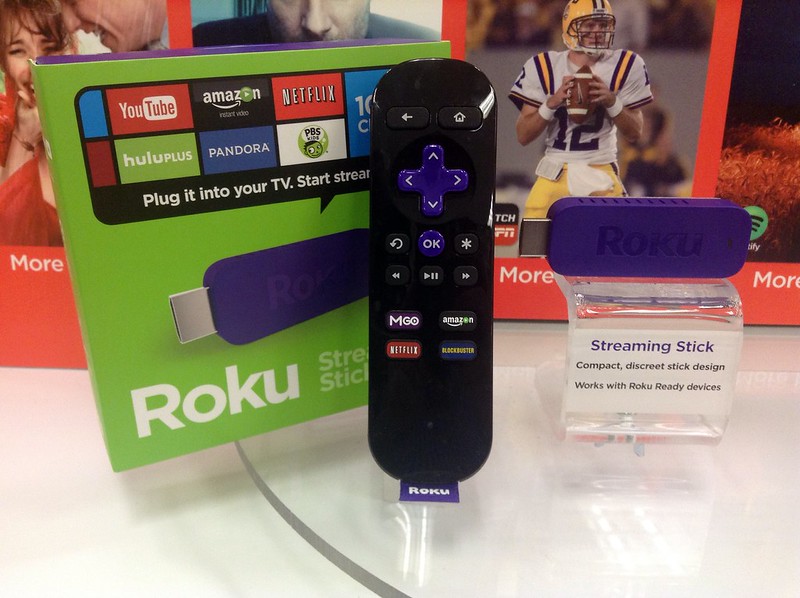Consumer technology has come a long way over the years, with certain gadgets leading the charge in transforming the way we live, work, and play. From gaming consoles that redefined entertainment to smartphones that changed how we communicate and interact with the world, these pioneering devices have shaped our daily lives in ways we often take for granted. In this article, we’ll explore 16 of the most influential gadgets that not only advanced technology but also set new standards in their respective fields. Each of these innovations left a lasting impact, influencing future developments and the way we engage with technology today.
The Apple iPhone (2007)

The iPhone revolutionized the way we interact with mobile technology. Its capacitive touchscreen eliminated the need for physical buttons, introducing multi-touch capabilities that allowed users to navigate with their fingers. The App Store, launched shortly after, transformed the software ecosystem, enabling developers to create and distribute apps directly to users. Powered by a robust operating system, iOS, the iPhone set the stage for mobile computing, combining a phone, camera, music player, and internet browser all in one. With its elegant design and powerful features, the iPhone set the standard for future smartphones. It also introduced features like FaceTime, GPS navigation, and integration with Apple’s suite of devices. Its impact on consumer habits, such as social media engagement and app-based services, remains profound.
The Sony Walkman (1979)

The Sony Walkman forever changed how people consumed music. This portable cassette player, initially designed for personal listening, allowed users to carry their music collection with them wherever they went. The lightweight, compact design was groundbreaking at the time, and its portability reshaped the way people interacted with music. The Walkman offered a sense of personal freedom, as listeners could now enjoy music without being tethered to a stationary stereo system. Over time, the Walkman evolved to support other media formats, like CDs and digital music files. It made music an individualized experience, while also driving the popularity of portable headphones. This small gadget played a pivotal role in the mass adoption of personal audio technology.
The IBM PC (1981)

The IBM Personal Computer (PC) set the foundation for the personal computing revolution. Released with an open architecture, it allowed third-party hardware and software developers to create compatible products, giving rise to a vast ecosystem of PC-based technology. This openness led to the PC becoming the standard for businesses and home use alike. The IBM PC’s introduction of a fully integrated operating system and compatible software options marked a turning point in computing. Its design was simple yet powerful, making computers more accessible and affordable for the average consumer. Within just a few years, the IBM PC quickly became the benchmark for computing performance. The impact it had on the world of business, education, and entertainment is still felt today.
The Kindle (2007)

The Kindle brought e-books to the mainstream, transforming the publishing and reading experience. This e-reader, with its e-ink display, provided a paper-like reading experience without the glare of traditional screens, allowing users to read comfortably for hours. Its slim profile and long battery life made it the perfect companion for on-the-go readers. The Kindle’s wireless connectivity enabled users to download books directly from Amazon’s vast library, making it more convenient than ever to carry thousands of books in one portable device. The device also introduced features like adjustable font sizes, built-in dictionaries, and notes, enhancing the reading experience. The Kindle became a game-changer for authors, offering a new platform for self-publishing. As a result, it helped launch a revolution in digital reading and e-publishing.
The Nintendo Game Boy (1989)

The Game Boy turned portable gaming into a cultural phenomenon. Released by Nintendo, it offered a compact, handheld gaming experience with a library of engaging titles. Its monochrome LCD screen may seem primitive by today’s standards, but it was a major innovation at the time, giving gamers the ability to play anywhere. The Game Boy’s durability and long battery life set it apart from other portable devices. It was the first gaming console to feature popular titles like Tetris and Pokémon, which played a significant role in the system’s success. Its simple design and intuitive controls made it accessible to players of all ages. The Game Boy’s success laid the groundwork for the dominance of handheld gaming consoles in the years to come.
The Amazon Echo (2014)

The Amazon Echo introduced the world to the concept of voice assistants in a truly practical way. Powered by Amazon’s Alexa, the Echo could play music, control smart home devices, provide weather updates, and more, all with voice commands. Its intuitive interface and seamless integration with Amazon services like shopping and Prime Video made it a must-have gadget for many households. The device’s hands-free functionality revolutionized how people interacted with technology in their homes. With subsequent iterations, the Echo evolved to include improved sound quality, expanded smart home capabilities, and a wider range of compatible third-party devices. This gadget set off a wave of competition, with other companies quickly developing their own voice-activated assistants. It ultimately helped make voice-controlled smart homes a reality for millions of consumers.
The Microsoft Xbox (2001)

The Xbox reshaped the gaming landscape by introducing powerful hardware and online gaming. Microsoft’s foray into the console market brought a fresh approach with its cutting-edge graphics and hardware performance, rivaling Sony’s PlayStation. The Xbox was also the first to offer Xbox Live, an online service that enabled gamers to connect and compete with each other across the world. It set new standards for multiplayer gaming, allowing seamless connections and a global community. The console’s library of games, including Halo, helped establish it as a dominant force in the gaming world. The Xbox also paved the way for downloadable content (DLC), expanding how players accessed and enjoyed additional content. Its success laid the groundwork for Microsoft’s continued dominance in gaming and entertainment.
The Roku Streaming Stick (2008)

The Roku Streaming Stick transformed how people consume television content. By plugging into a TV’s HDMI port, the Roku enabled users to access streaming services like Netflix, Hulu, and Amazon Prime without the need for a cable box. The device’s ease of use and relatively low price point made it an accessible option for cord-cutters. Roku’s intuitive interface and regular software updates ensured a consistently good user experience. The device’s expansion of streaming content libraries and its support for 4K and HDR video helped further cement its popularity. With its minimalistic design and simple remote, the Roku was a perfect solution for those looking to simplify their home entertainment setup. Its success led to the development of various streaming sticks and devices, changing the way people watched television.
The Polaroid OneStep (1977)

The Polaroid OneStep changed the way people experienced photography. This instant camera allowed users to take photos and have physical prints developed within minutes, eliminating the need for a darkroom or film development process. Its simple design and easy-to-use interface made it accessible to people of all ages. The instant gratification of holding a print in hand immediately after taking a photo was revolutionary, especially at a time when photography was still dominated by film. Polaroid’s technology made it possible to capture memories in a new, tangible way. Over time, it became a symbol of fun and creativity, inspiring spontaneous photography. Despite the rise of digital cameras, the Polaroid OneStep’s impact on the photo industry remains undeniable.
Sony PlayStation (1994)

The Sony PlayStation forever changed the gaming landscape, ushering in a new era of 3D gaming. When it was released, the console offered advanced graphics and sound capabilities compared to its contemporaries, like the Nintendo 64 and Sega Saturn. PlayStation’s use of CD-ROMs instead of cartridges provided significantly larger storage, enabling more complex games with higher-quality audio and video. This innovation allowed for immersive, cinematic gaming experiences that were not possible on earlier consoles. The PlayStation also introduced iconic franchises such as Gran Turismo, Final Fantasy VII, and Metal Gear Solid. Sony’s focus on making gaming more accessible to a broader audience helped PlayStation sell over 100 million units globally. Additionally, it paved the way for the evolution of gaming hardware, with subsequent generations continually raising the bar for performance, graphics, and online play.
The Digital Camera (1990s)

The digital camera was a game-changer for photography, making it more accessible and efficient than ever before. Traditional film cameras required the purchase of film and developed prints, which was both time-consuming and costly. Digital cameras eliminated these barriers by storing photos on memory cards and allowing immediate viewing on LCD screens. With increasingly powerful sensors, compact designs, and higher resolutions, digital cameras started producing images comparable to those captured with professional film cameras. The integration of features like autofocus, optical zoom, and face detection brought professional-grade photography into the hands of everyday consumers. These gadgets also made photo editing and sharing much easier, with digital files easily transferred to computers and uploaded to websites. As smartphones improved their camera technology, the digital camera industry saw a shift, but the impact of this innovation is still felt today.
The Microwave Oven (1945)

While microwaves existed in earlier forms, the 1945 invention of the microwave oven by Percy Spencer brought rapid, convenient cooking to the masses. Spencer, working at Raytheon, discovered that microwave radiation could cook food quickly by exciting water molecules. This invention fundamentally changed food preparation, reducing cooking times from hours to mere minutes. In the following decades, the microwave became a standard household appliance, allowing people to reheat leftovers or prepare meals without traditional stovetops or ovens. The appliance’s popularity exploded in the 1970s and 1980s, as manufacturers developed more compact, affordable models. Its versatility, convenience, and ability to defrost or cook frozen foods made it indispensable in the modern kitchen. The microwave oven was not just a time-saver; it also introduced an entirely new way of cooking and altered daily life in countless households.
The Flat-Screen TV (1990s)

The flat-screen television marked a major shift from bulky CRT TVs, offering a sleeker, more aesthetically pleasing design. The introduction of plasma and LCD technology provided better picture quality, wider viewing angles, and, most importantly, thinner profiles. This transition revolutionized home entertainment by enabling wall-mounted TVs, creating space-saving options in living rooms and bedrooms. Flat-screens also allowed for larger displays without compromising on space, making cinematic viewing experiences more accessible in home environments. Over time, LED and OLED displays provided even sharper resolutions and brighter colors. Innovations like smart TVs, which connect to the internet for streaming services, further enhanced the flat-screen TV’s appeal. The transformation of the TV industry helped redefine how we consume visual media, offering greater convenience, flexibility, and enjoyment.
This article originally appeared on Rarest.org.
More From Rarest.Org
Bridges tell the story of America’s engineering heritage, linking landscapes and people across generations. Some of the oldest bridges in the United States offer a glimpse into early craftsmanship, each built with purpose and precision. Read more.
The longest songs ever written often push the boundaries of musical creativity, blending different genres and moods to create something truly unique. These epic tracks don’t just stretch the usual song length, they redefine what a song can be. Read more.
Japan has a rich and storied brewing history, with beer production dating back over a century. The country’s oldest breweries have shaped the beer landscape both domestically and internationally, blending traditional brewing methods with modern innovations. Read more.



